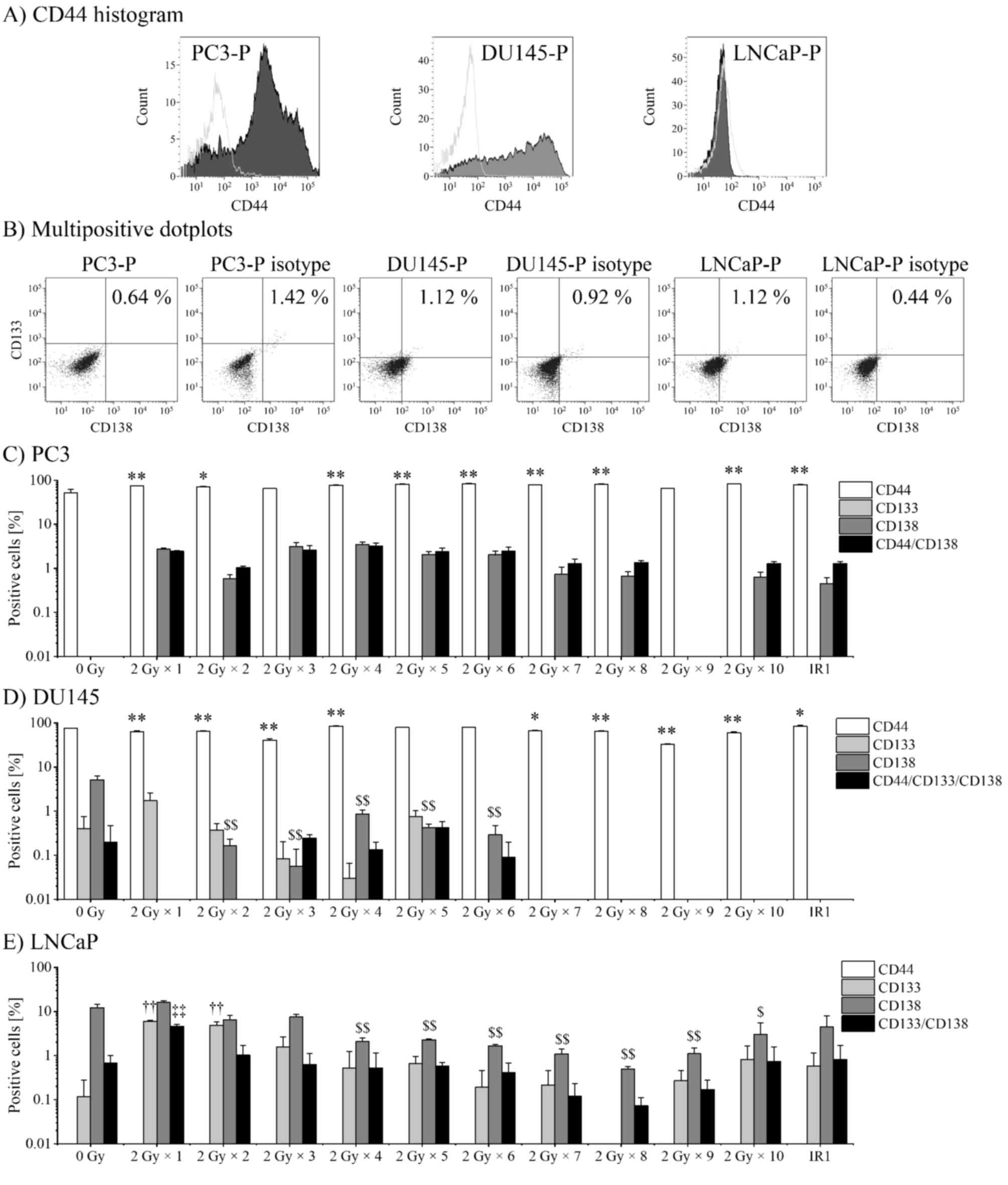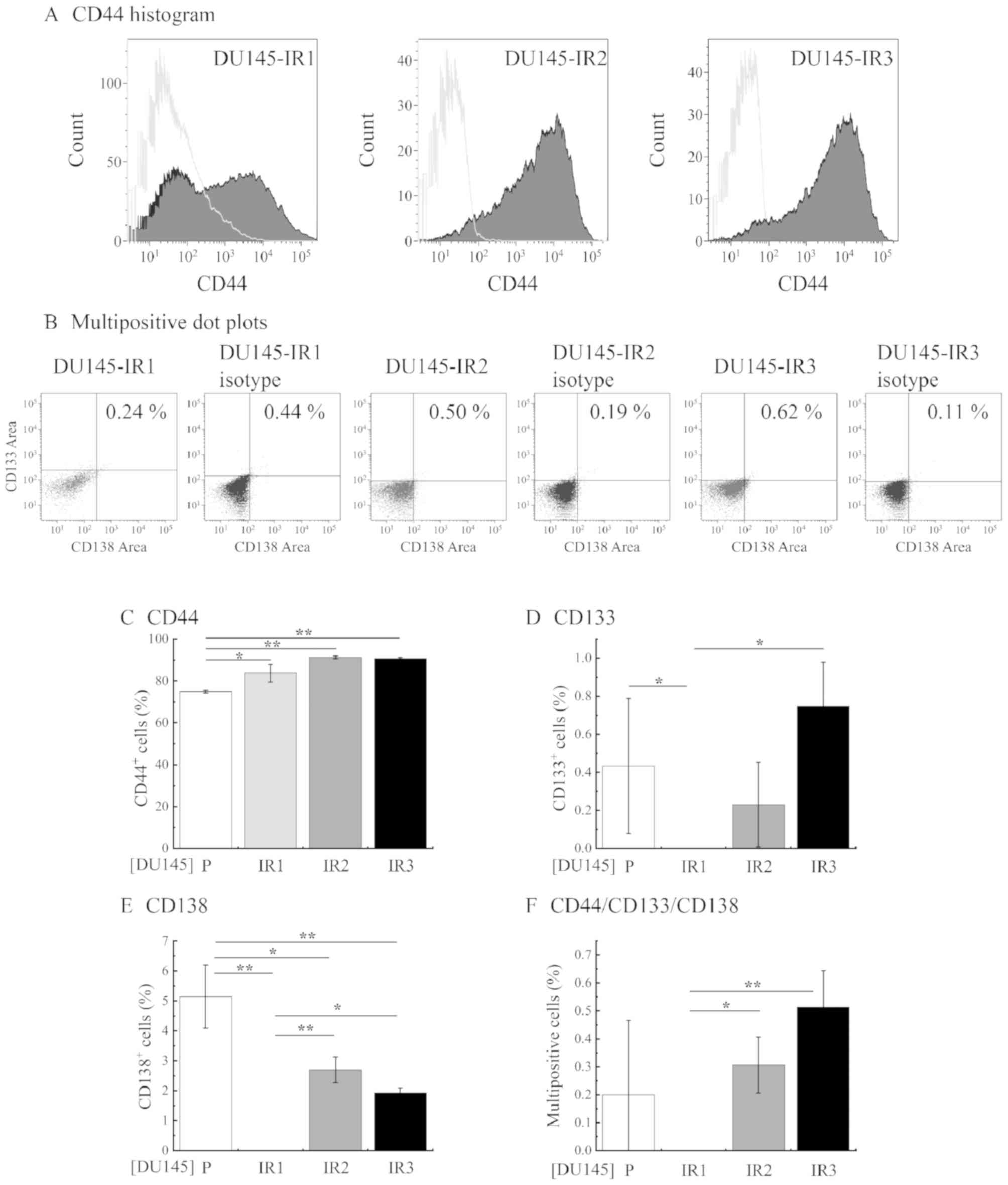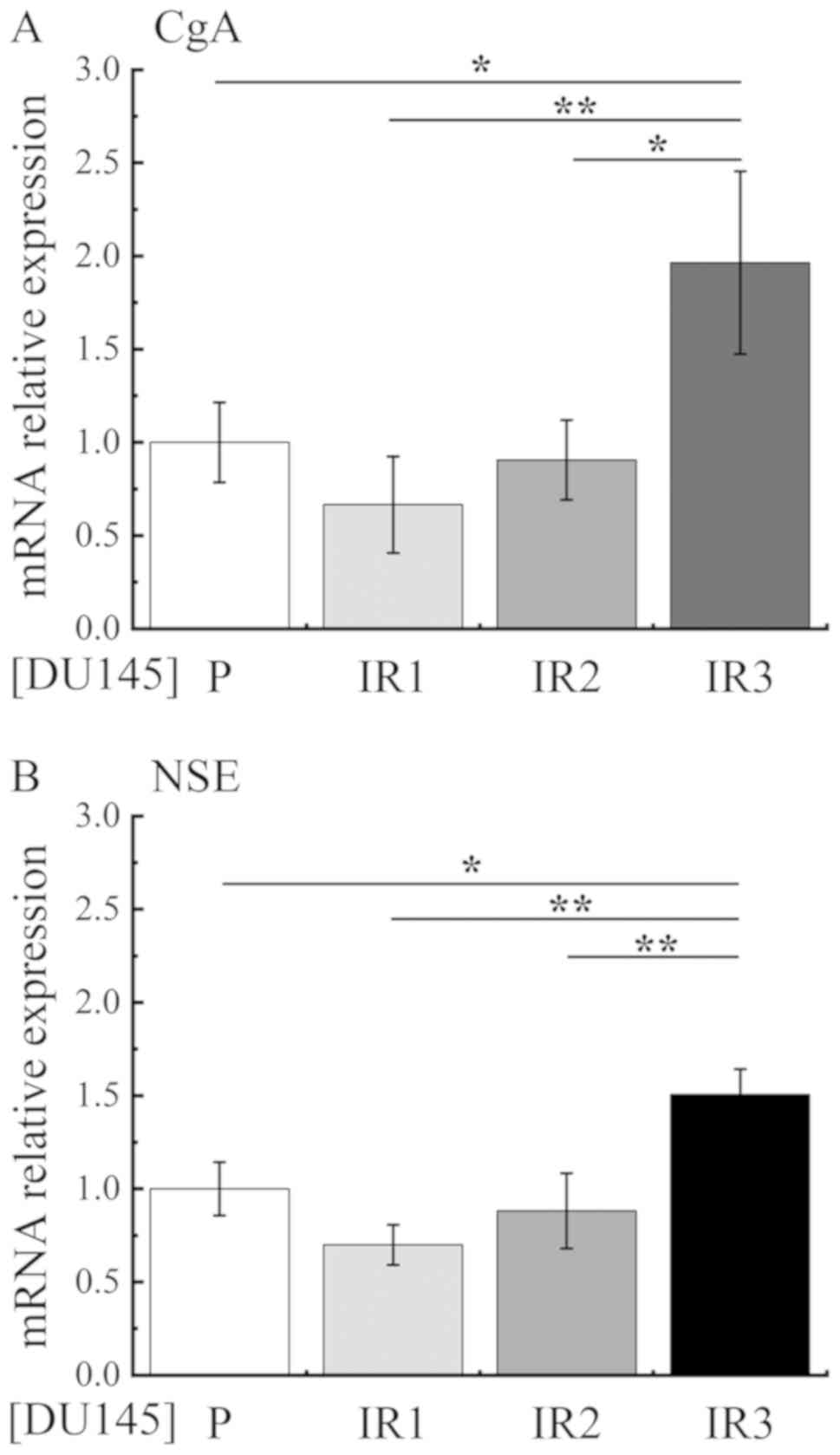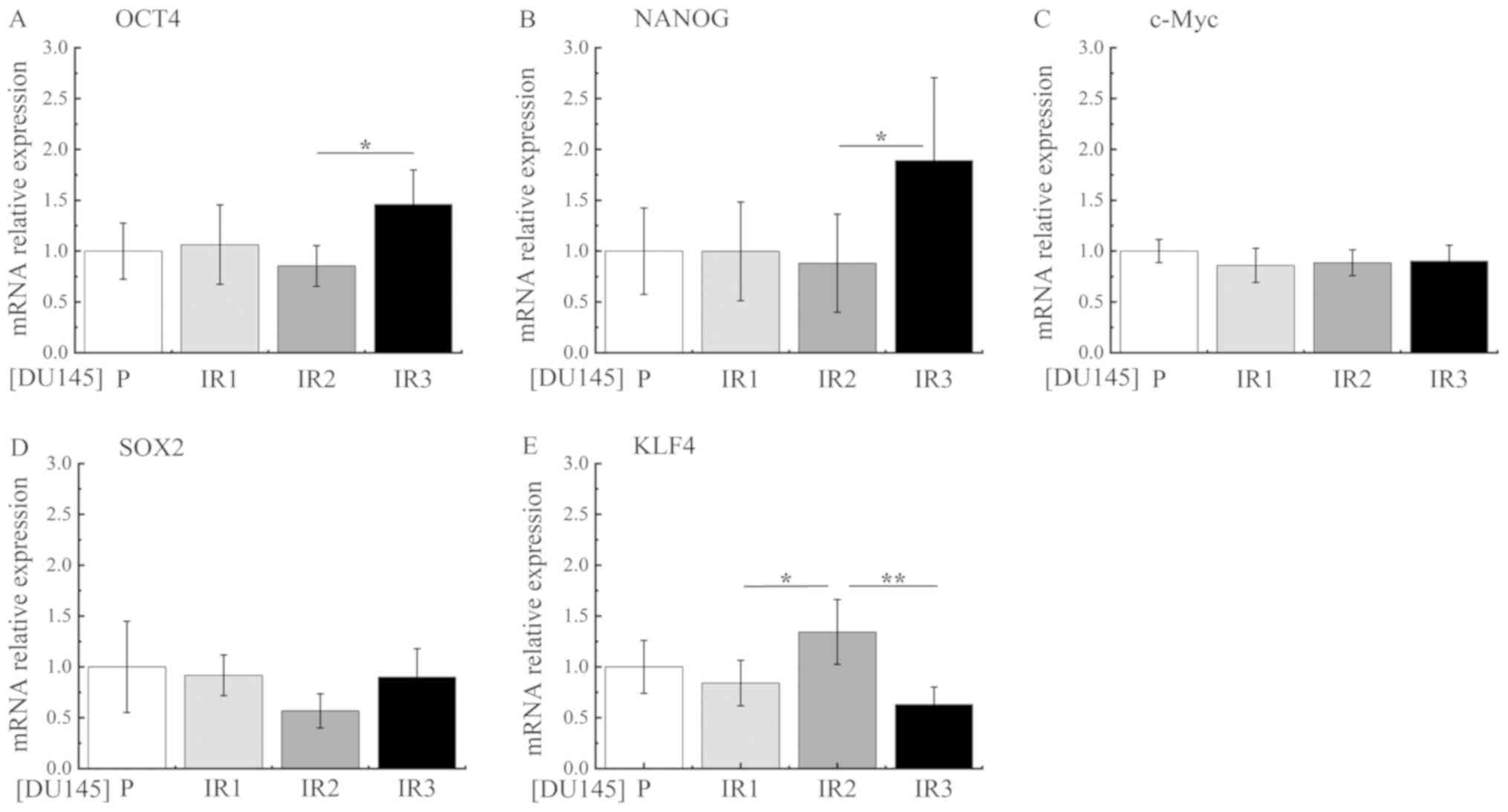|
1
|
Jemal A, Bray F, Center MM, Ferlay J, Ward
E and Forman D: Global cancer statistics. CA Cancer J Clin.
61:69–90. 2011. View Article : Google Scholar : PubMed/NCBI
|
|
2
|
Katanoda K, Sobue T, Tanaka H and
Miyashiro I: 2016.JACR Monograph Supplement No. 2. Tokyo:
Japanese Association of Cancer Registries.
|
|
3
|
Takeda K, Takai Y, Narazaki K, Mitsuya M,
Umezawa R, Kadoya N, Fujita Y, Sugawara T, Kubozono M, Shimizu E,
et al: Treatment outcome of high-dose image-guided
intensity-modulated radiotherapy using intra-prostate fiducial
markers for localized prostate cancer at a single institute in
Japan. Radiat Oncol. 7:1052012. View Article : Google Scholar : PubMed/NCBI
|
|
4
|
Zelefsky MJ, Chan H, Hunt M, Yamada Y,
Shippy AM and Amols H: Long-term outcome of high dose intensity
modulated radiation therapy for patients with clinically localized
prostate cancer. J Urol. 176:1415–1419. 2006. View Article : Google Scholar : PubMed/NCBI
|
|
5
|
Grimm P, Billiet I, Bostwick D, Dicker AP,
Frank S, Immerzeel J, Keyes M, Kupelian P, Lee WR, Machtens S, et
al: Comparative analysis of prostate-specific antigen free survival
outcomes for patients with low, intermediate and high risk prostate
cancer treatment by radical therapy. Results from the Prostate
Cancer Results Study Group. BJU Int. 109 (Suppl 1):S22–S29. 2012.
View Article : Google Scholar
|
|
6
|
Pahlajani N, Ruth KJ, Buyyounouski MK,
Chen DY, Horwitz EM, Hanks GE, Price RA and Pollack A: Radiotherapy
doses of 80 Gy and higher are associated with lower mortality in
men with gleason score 8 to 10 prostate cancer. Int J Radiat Oncol
Biol Phys. 82:1–16. 2012. View Article : Google Scholar
|
|
7
|
Li F, Zhou K, Gao L, Zhang B, Li W, Yan W,
Song X, Yu H, Wang S, Yu N and Jiang Q: Radiation induces the
generation of cancer stem cells: A novel mechanism for cancer
radioresistance. Oncol Lett. 12:3059–3065. 2016. View Article : Google Scholar : PubMed/NCBI
|
|
8
|
Kurth I, Hein L, Mäbert K, Peitzsch C, Koi
L, Cojoc M, Kunz-Schughart L, Baumann M and Dubrovska A: Cancer
stem cell related markers of radioresistance in head and neck
squamous cell carcinoma. Oncotarget. 6:34494–34509. 2015.
View Article : Google Scholar : PubMed/NCBI
|
|
9
|
Arechaga-Ocampo E, Lopez-Camarillo C,
Villegas-Sepulveda N, Gonzalez-De la Rosa CH, Perez-Añorve IX,
Roldan-Perez R, Flores-Perez A, Peña-Curiel O, Angeles-Zaragoza O,
Rangel Corona R, et al: Tumor suppressor miR-29c regulates
radioresistance in lung cancer cells. Tumour Biol.
39:10104283176950102017. View Article : Google Scholar : PubMed/NCBI
|
|
10
|
Ahmed KM, Dong S, Fan M and Li JJ: Nuclear
factor-kappaB p65 inhibits mitogen-activated protein kinase
signaling pathway in radioresistant breast cancer cells. Mol Cancer
Res. 4:945–955. 2006. View Article : Google Scholar : PubMed/NCBI
|
|
11
|
Hazawa M, Hosokawa Y, Monzen S, Yoshino H
and Kashiwakura I: Regulation of DNA damage response and cell cycle
in radiation-resistant HL60 myeloid leukemia cells. Oncol Rep.
28:55–61. 2012.PubMed/NCBI
|
|
12
|
Kim JS, Chang JW, Yun HS, Yang KM, Hong
EH, Kim DH, Um HD, Lee KH, Lee SJ and Hwang SG: Chloride
intracellular channel 1 identified using proteomic analysis plays
an important role in the radiosensitivity of HEp-2 cells via
reactive oxygen species production. Proteomics. 10:2589–2604. 2010.
View Article : Google Scholar : PubMed/NCBI
|
|
13
|
Chin C, Bae JH, Kim MJ, Hwang JY, Kim SJ,
Yoon MS, Lee MK, Kim DW, Chung BS, Kang CD and Kim SH:
Radiosensitization by targeting radioresistance-related genes with
protein kinase A inhibitor in radioresistant cancer cells. Exp Mol
Med. 37:608–618. 2005. View Article : Google Scholar : PubMed/NCBI
|
|
14
|
Jin Y, Xu K, Chen Q, Wang B, Pan J, Huang
S, Wei Y and Ma H: Simvastatin inhibits the development of
radioresistant esophageal cancer cells by increasing the
radiosensitivity and reversing EMT process via the PTEN-PI3K/AKT
pathway. Exp Cell Res. 362:1–8. 2017.PubMed/NCBI
|
|
15
|
Chang L, Graham PH, Hao J, Ni J, Bucci J,
Cozzi PJ, Kearsley JH and Li Y: Acquisition of
epithelial-mesenchymal transition and cancer stem cell phenotypes
is associated with activation of the PI3K/Akt/mTOR pathway in
prostate cancer radioresistance. Cell Death Dis. 4:1–13. 2013.
View Article : Google Scholar
|
|
16
|
Cojoc M, Peitzsch C, Kurth I, Trautmann F,
Kunz-Schughart LA, Telegeev GD, Stakhovsky EA, Walker JR, Simin K,
Lyle S, et al: Aldehyde Dehydrogenase is regulated by b-Catenin/TCF
and promotes radioresistance in prostate cancer progenitor cells.
Cancer Res. 75:1482–1494. 2015. View Article : Google Scholar : PubMed/NCBI
|
|
17
|
Peitzsch C, Cojoc M, Hein L, Kurth I,
Mäbert K, Trautmann F, Klink B, Schröck E, Wirth MP, Krause M, et
al: An Epigenetic reprogramming strategy to resensitize
radioresistant prostate cancer cells. Cancer Res. 76:2637–2651.
2016. View Article : Google Scholar : PubMed/NCBI
|
|
18
|
Hu CD, Choo R and Huang J: Neuroendocrine
differentiation in prostate cancer: A mechanism of radioresistance
and treatment failure. Front Oncol. 5:902015. View Article : Google Scholar : PubMed/NCBI
|
|
19
|
Deng X, Liu H, Huang J, Cheng L, Keller
ET, Parsons SJ and Hu CD: Ionizing radiation induces prostate
cancer neuroendocrine differentiation through interplay of CREB and
ATF2: Implications for disease progression. Cancer Res.
68:9663–9670. 2008. View Article : Google Scholar : PubMed/NCBI
|
|
20
|
Suarez CD, Deng X and Hu CD: Targeting
CREB inhibits radiation-induced neuroendocrine differentiation and
increases radiation-induced cell death in prostate cancer cells. Am
J Cancer Res. 4:850–861. 2014.PubMed/NCBI
|
|
21
|
Vashchenko N and Abrahamsson PA:
Neuroendocrine differentiation in prostate cancer: Implications for
new treatment modalities. Eur Urol. 47:147–155. 2005. View Article : Google Scholar : PubMed/NCBI
|
|
22
|
Wu C and Huang J: Phosphatidylinositol
3-Kinase-AKT- mammalian target of rapamycin pathway is essential
for neuroendocrine differentiation of prostate cancer. J Biol Chem.
282:3571–3583. 2007. View Article : Google Scholar : PubMed/NCBI
|
|
23
|
Wang L, Huang X, Zheng X, Wang X, Li S,
Zhang L, Yang Z and Xia Z: Enrichment of prostate cancer stem-like
cells from human prostate cancer cell lines by culture in
serum-free medium and chemoradiotherapy. Int J Biol Sci. 9:472–479.
2013. View Article : Google Scholar : PubMed/NCBI
|
|
24
|
Ni J, Cozzi PJ, Hao JL, Beretov J, Chang
L, Duan W, Shigdar S, Delprado WJ, Graham PH, Bucci J, et al: CD44
Variant 6 is associated with prostate cancer metastasis and
chemo-/radioresistance. Prostate. 74:602–617. 2014. View Article : Google Scholar : PubMed/NCBI
|
|
25
|
Shimada K, Anai S, Fujii T, Tanaka N,
Fujimoto K and Konishi N: Syndecan-1 (CD138) contributes to
prostate cancer progression by stabilizing tumour-initiating cells.
J Pathol. 231:495–504. 2013. View Article : Google Scholar : PubMed/NCBI
|
|
26
|
Shimada K, Nakamura M, De Velasco MA,
Tanaka M, Ouji Y and Konishi N: Syndecan-1, a new target molecule
involved in progression of androgen-independent prostate cancer.
Cancer Sci. 100:1248–1254. 2009. View Article : Google Scholar : PubMed/NCBI
|
|
27
|
Hiraga T, Ito S and Nakamura H: Cancer
stem-like cell marker CD44 promotes bone metastases by enhancing
tumorigenicity, cell motility, and hyaluronan production. Cancer
Res. 73:4112–4122. 2013. View Article : Google Scholar : PubMed/NCBI
|
|
28
|
Rybak AP and Tang D: SOX2 plays a critical
role in EGFR-mediated self-renewal of human prostate cancer
stem-like cells. Cell Signal. 25:2734–2742. 2013. View Article : Google Scholar : PubMed/NCBI
|
|
29
|
Chang YL, Zhou PJ, Wei L, Li W, Ji Z, Fang
YX and Gao WQ: MicroRNA-7 inhibits the stemness of prostate cancer
stem-like cells and tumorigenesis by repressing KLF4/PI3K/Akt/p21
pathway. Oncotarget. 6:24017–24031. 2015. View Article : Google Scholar : PubMed/NCBI
|
|
30
|
Jeter CR, Liu B, Liu X, Chen X, Liu C,
Calhoun-Davis T, Repass J, Zaehres H, Shen JJ and Tang DG: NANOG
promotes cancer stem cell characteristics and prostate cancer
resistance to androgen deprivation. Oncogene. 30:3833–3845. 2011.
View Article : Google Scholar : PubMed/NCBI
|
|
31
|
Russo MV, Esposito S, Tupone MG, Manzoli
L, Airoldi I, Pompa P, Cindolo L, Schips L, Sorrentino C and Di
Carlo E: SOX2 boosts major tumor progression genes in prostate
cancer and is a functional biomarker of lymph node metastasis.
Oncotarget. 7:12372–12385. 2016. View Article : Google Scholar : PubMed/NCBI
|
|
32
|
Livak KJ and Schmittgen TD: Analysis of
relative gene expression data using real-time quantitative PCR and
the 2(-Delta Delta C(T)) method. Methods. 25:402–408. 2001.
View Article : Google Scholar : PubMed/NCBI
|
|
33
|
Chen YC, Hsu HS, Chen YW, Tsai TH, How CK,
Wang CY, Hung SC, Chang YL, Tsai ML, Lee YY, et al: Oct-4
expression maintained cancer stem-like properties in lung
cancer-derived CD133-positive Cells. PLoS One. 3:e26372008.
View Article : Google Scholar : PubMed/NCBI
|
|
34
|
Diehn M, Cho RW, Lobo NA, Kalisky T, Dorie
MJ, Kulp AN, Qian D, Lam JS, Ailles LE, Wong M, et al: Association
of reactive oxygen species levels and radioresistance in cancer
stem cells. Nature. 458:780–783. 2009. View Article : Google Scholar : PubMed/NCBI
|
|
35
|
Xiao W, Graham PH, Power CA, Hao J,
Kearsley JH and Li Y: CD44 is a biomarker associated with human
prostate cancer radiation sensitivity. Clin Exp Metastasis. 29:1–9.
2012. View Article : Google Scholar : PubMed/NCBI
|
|
36
|
Lagadec C, Vlashi E, Della Donna L, Meng
Y, Dekmezian C, Kim K and Pajonk F: Survival and self-renewing
capacity of breast cancer initiating cells during fractionated
radiation treatment. Breast Cancer Res. 12:R132010. View Article : Google Scholar : PubMed/NCBI
|
|
37
|
Xing N, Qian J, Bostwick D, Bergstralh E
and Young CY: Neuroendocrine cells in human prostate over-express
the anti-apoptosis protein survivin. Prostate. 48:7–15. 2001.
View Article : Google Scholar : PubMed/NCBI
|
|
38
|
Gong J, Lee J, Akio H, Schlegel PN and
Shen R: Attenuation of apoptosis by chromogranin a-induced akt and
survivin pathways in prostate cancer Cells. Endocrinology.
148:4489–4499. 2007. View Article : Google Scholar : PubMed/NCBI
|
|
39
|
Dayon A, Brizuela L, Martin C, Mazerolles
C, Pirot N, Doumerc N, Nogueira L, Golzio M, Teissié J, Serre G, et
al: Sphingosine kinase-1 Is central to androgen-regulated prostate
cancer growth and survival. PLoS One. 4:e80482009. View Article : Google Scholar : PubMed/NCBI
|
|
40
|
Abrahamsson PA: Neuroendocrine cells in
tumour growth of the prostate. Endocr Relat Cancer. 6:503–519.
1999. View Article : Google Scholar : PubMed/NCBI
|
|
41
|
Cox ME, Deeble PD, Lakhani S and Parsons
SJ: Acquisition of neuroendocrine characteristics by prostate tumor
cells is reversible: Implications for prostate cancer progression.
Cancer Res. 59:3821–3830. 1999.PubMed/NCBI
|
|
42
|
Boyer LA, Lee TI, Cole MF, Johnstone SE,
Levine SS, Zucker JP, Guenther MG, Kumar RM, Murray HL, Jenner RG,
et al: Core transcriptional regulatory circuitry in human embryonic
stem cells. Cell. 122:947–956. 2005. View Article : Google Scholar : PubMed/NCBI
|
|
43
|
Takahashi K and Yamanaka S: Induction of
pluripotent stem cells from mouse embryonic and adult fibroblast
cultures by defined factors. Cell. 126:663–76. 2006. View Article : Google Scholar : PubMed/NCBI
|
|
44
|
Maina PK, Shao P, Liu Q, Fazli L, Tyler S,
Nasir M, Dong X and Qi HH: c-MYC drives histone demethylase PHF8
during neuroendocrine differentiation and in castration-resistant
prostate cancer. Oncotarget. 7:75585–75602. 2016. View Article : Google Scholar : PubMed/NCBI
|
|
45
|
Sotomayor P, Godoy A, Smith GJ and Huss
WJ: Oct4A is expressed by a subpopulation of prostate
neuroendocrine cells. Prostate. 69:401–410. 2009. View Article : Google Scholar : PubMed/NCBI
|



















